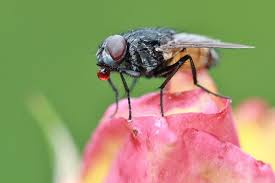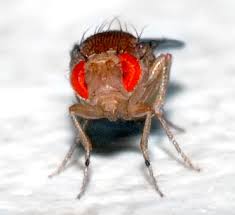The application of gene technology to arthropods is not as advanced as that to crop plants but there are various research programmes in this area that are beginning to lead to products for which biosafety issues will have to be considered.
There are several breeding programmes for both the enhancement of beneficial insects and for producing material for pest control approaches.
For instance, silk worms have been bred for many years to improve stock and there are breeding programmes for developing resistance of bees to diseases and pests and other characters. Pest resistance traits can be introduced into arthropods that are used for biological control.
A major way of controlling pest insects is by introducing sterile males into the natural population; this is termed the sterile insect release method (SIRM).
This has been used mainly for pests of animals and for animal disease vectors but has equal applicability to some plant pests. In this method large numbers of males are rendered sterile by irradiation and complete with the natural fertile males.
However, the method has various problems, one of the main ones being obtaining insect populations that are primarily male. The application of recombinant DNA technology to make the population predominantly male would help in overcoming these problems.
Genetically Modified (Gm) Arthropods
As noted above, there are various research programmes aimed at genetically modifying insects.
These include improving beneficial insects, conferring pesticide resistance onto biocontrol insects, improving insect viruses for insect control, producing mainly male progeny for SIRM, providing molecular markers to distinguish sterile from wild insects and making disease vectors unable to transmit diseases.

There are two basic approaches to this, one to directly modify the insect itself and the other to modify symbionts that live within the insect.
There are two basic strategies to directly modify the insect itself. For the transgene to be expressed in all the insect cells and to be passed to subsequent generations, the germline (egg or sperm) cells have to be transformed.
Several techniques such as microinjection or biolistics can be used to introduce the transgene into the egg or sperm cells. The main vectors used for this technique are transposable elements.
Read Also : Introduction to Plant Pests and Insects
Alternatively, the transgene can be introduced using a viral vector. For most viral vectors the transgene is only expressed in that generation of the insect and is not passed to the progeny (termed transient expression).
Most insects (and other arthropods) contain bacterial symbionts that are maternally transmitted. The rationale behind the second approach to genetically modifying insects is to transform the symbiotic bacteria, which can then release the transgene product into the insect haemocoel (blood).
Microinjection using very fine glass capillary needles is used to reintroduce the modified symbionts back into the insect. Most of the studies on transgenic insect have been attempts to control major human diseases such as malaria or dengue.
Various Genetically Modified (GM) strategies are being actively worked on to effect this control; these include sterile male production by inserting a dominant female specific factor, producing plasmodium-refractory strains (plasmodium is the organism that causes malaria) of the Anopheles mosquito and using two unlinked lethal genes each linked to a suppressor of the other lethal gene.
Bio-safety Regulation
In 2006 there are some of the first applications to the biosafety regulatory authorities for release of Genetically Modified insects.
Thus these are early stages of developing biosafety regulatory structures for the release of such products. Because of the mobility of insects many of these questions are ecological and some differ from those considered for release of transgenic plants.
These biosafety considerations are being built into the research programmes on developing transgenic insects. Although the current focus is on insects that impact with humans it is very likely that there will be consideration given soon to insects involved with the transmission of plant diseases; the biosafety considerations for these will be very similar to those for human disease vectors.
Furthermore, the approach described above of rendering a virus vector incapable of transmitting the disease will have several biosafety advantages. It does not involve human and animal health considerations of transgenic crops or biodiversity issues of killing insects.
Read Also : The Four (4) Traditional Waste Management Methods






